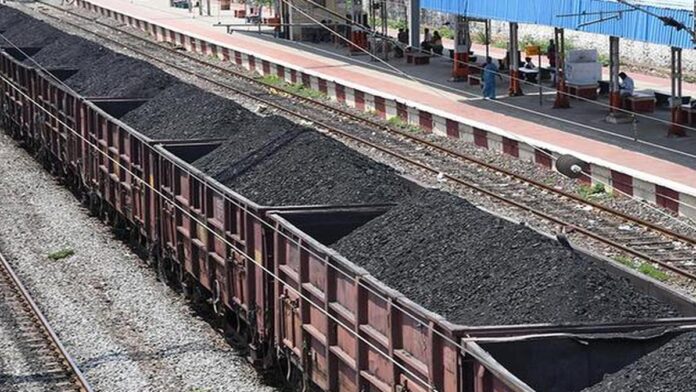
Coal-loaded wagons move towards the Kamarajar Port at Ennore, near Chennai. File
| Photo Credit: The Hindu
The story so far: A recent report by the Organized Crime and Corruption Reporting Project, a venture backed by billionaire hedge fund manager and philanthropist, George Soros, furnished new documents to allege that in 2014, the Adani Group claimed ‘low grade’ coal, imported from Indonesia, to be ‘high-quality’ coal, inflated its value and sold it to Tamil Nadu’s power generation company, TANGEDCO (Tamil Nadu Generation and Distribution Company).
What is ‘high grade’ and ‘low grade’ coal?
High and low quality are relative terms and only meaningful in the context of where the coal is used and how they are processed. The Gross Calorific Value (GCV), or the amount of heat or energy that can be generated from burning the coal, determines the gradation of coal. Coal being a fossil fuel is a mixture of carbon, ash, moisture and a host of other impurities. The higher the available carbon in a unit of coal, the greater is its quality or ‘grade.’ There are 17 grades of coal by this metric from grade 1, or top quality coal, with a kilo of it yielding higher than 7,000 kcal, and the lowest producing anywhere between 2,200-2,500 kcal, as per a classification by the Coal Ministry. However, the calorific value is not a useful metric on its own. The most important uses of coal are in running thermal power plants or powering a blast furnace to produce steel and both require different kinds of coal. ‘Coking’ coal is the kind needed to produce coke — an essential component of steel making — and thus requires minimal ash content. Non-coking coal, despite its ash content, can be used to generate enough useful heat to run a boiler and turbine.
What are the characteristics of Indian coal?
Indian coal has historically been evaluated as being high in ash content and low in calorific value compared to imported coal. The average GCV of domestic thermal coal ranges from 3,500-4,000 kcal/kg compared to imported thermal coals of +6,000 kcal/kg of GCV. Also the average ash content of Indian coals is more than 40% compared to imported coal which has less than 10% ash content. The consequence of this is that high-ash coal when burnt results in higher particulate matter, nitrogen and sulphur dioxide. Given this, the government, since 1954, has controlled the price of coal in a way that power companies were disincentivised to use high-grade coking coal for power generation.
Thus in the pursuit of balancing India’s needs for coal production, power plants and pollution, the government has recommended the use of imported coal with lower ash and moisture content. The Central Electricity Authority (CEA) in 2012 recommended, and which still stands, that about 10-15% blending of imported coal can usually be safely used in Indian power boilers, which are designed for low quality Indian coal.
What is clean coal?
Broadly, we get clean coal when the carbon content has been increased by reducing its ash content. Coal plants have ‘washing plants’ on site which can process the coal in ways that reduce ash and moisture content. They employ huge blowers or a ‘bath’ to remove fine, coarse ash. However, deploying such equipment is expensive and adds to the cost of power. The other method to clean coal — again requiring significant investment — is coal gasification. Here, the need to directly burn coal is bypassed by converting it into gas. By relying on an integrated gasification combined cycle (IGCC) system, steam and hot pressurised air or oxygen combine with coal in a reaction that forces carbon molecules apart. The resulting syngas, a mixture of carbon monoxide, hydrogen, CO2 and water vapour, is then cleaned and burned in a gas turbine to make electricity. Since IGCC power plants create two forms of energy (steam from the gasification process apart from syngas as fuel), they increase efficiency of the coal used.
What is the future of coal in India?
Official data says that India in 2023-24 produced 997 million tonnes of coal, an 11% growth over the previous year. Most of this was produced by the state-owned Coal India Ltd and its subsidiaries.
As of March 2024, India produced 261 tonnes of coal, of which 58 million tonnes was coking coal. Despite stated commitments to transition India’s electricity sector away from fossil fuel, coal is the mainstay of India’s energy economy. Change, however, is in the air as for the first time this year, renewable energy accounted for 71.5% of the record 13.6 GW power generation capacity added by India in the first quarter of this year, while coal’s share (including lignite) of total power capacity dropped below 50% for the first time since the 1960s.
#grade #coal #India #produce #Explained
